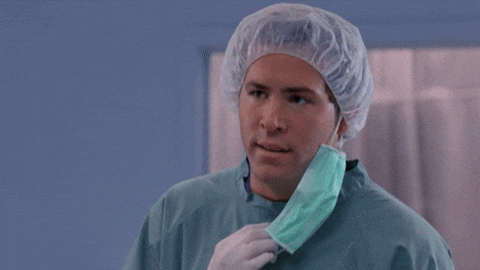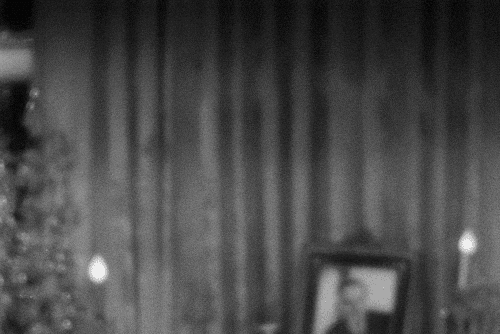
Struggling with thinning hair? Don't lose hope!
First thing’s first: if you’re struggling with hair loss or thinning hair, you’re not alone. Though the average person loses 50–100 hairs a day throughout their life, true hair thinning and loss affects approximately 40% of women and 50% of men. The cause is unique to the individual, but common causes include hormonal changes, genetics, and diet. The root cause of your hair thinning or loss can only be diagnosed by a medical doctor, so make sure to schedule a visit to your physician to get to the root of the issue. (Seeing a trichologist is a great option as well, as they specialize in hair and scalp.) Your physician should run labs to test for the levels and presence of the following:
Zinc
Iron
Vitamins B-7 (Biotin) and B complex
Copper
Vitamins C, E, and A
Co-enzyme Q10
A full thyroid panel (T3 & T4 specifically affect hair)
Brittany of Brittany Kate Hair wants to arm you with information on hair thinning and loss as well as provide a comprehensive list of the best shampoo, products, vitamins, and other treatments for thinning hair. So, without further ado...let’s get to it!
Why is my hair thinning?

Let’s start with the most hard-hitting question: why the heck am I losing my hair?!
To give you a general understanding of how our hair does what it does, let’s go over the three phases of hair growth: Growth, Resorption, and Rest (anagen, catagen, and telogen). Right now, approximately 80%–90% of your hair is in the Growth phase, 1%–2% is in Resorption, and about 15% is in Resting. If your hair seems to never grow past a certain length, you may have a short active phase of growth. However, if the rate at which your hair grows has decreased over time—or the rate at which you lose hair has increased—you may be experiencing true hair thinning or loss. Read on to find out more about the most common causes.
Telogen Effluvium
This hair loss occurs when the body forces too many hairs into the resting phase. It can stem from stress, medication, thyroid disorders, pregnancy, severe infections, surgery, nutrition, or a deficiency disorder. Sometimes it can take up to 3 months after a traumatic event to see this type of hair loss. It can present itself as all-over shedding or as Alopecia. However, hair should come back after your body returns to a state of homeostasis.
Traction hair loss
Traction hair loss often occurs to folks who wear tight hairstyles regularly—think cornrows, dreadlocks, extensions, or even tight ponytails or buns. Even sleep apnea mask straps can cause traction hair loss! (Quick tip: cover the straps with a silk/satin fabric). To reverse this loss and prevent additional thinning, try changing how you wear your hair. If you rock tight braids and up-dos every day, change it up! Alternate tighter hairdos with wearing your hair down, reverse the direction of your cornrows so the hair isn’t always pulled in the same direction, or try switching your part. Shake it out, why don’t ya? Show off that silky straight mane, let your curls run wild and free...whatever texture you’re working with, let it all hang out!
It's worth noting that sometimes, people with long hair can also experience traction hair loss as the hair becomes too heavy for the hair follicle.
Anagen effluvium
This excessive shedding or hair loss is most commonly caused by chemotherapy or radiation. People with autoimmune conditions such as alopecia areata and pemphigus vulgaris can also be affected.
You just had a baby
Many new moms see noticeable hair loss a few months after having a baby. This is normal—and not true hair loss. It’s simply caused by falling estrogen levels. Dermatologists refer to this condition as “excessive hair shedding”. Fortunately, most moms see their hair return to normalcy by their child’s first birthday.
Genetics
This is by far the most common form of hair loss, known as androgenetic alopecia (AGA). AGA can be inherited from either side of your family and can sometimes skip a generation. It occurs when hair follicles become sensitive to an increasing amount of testosterone in the body, specifically the byproduct DHT, resulting in the release of hair strands.
It is imperative to start AGA hair loss treatment as soon as you notice hair thinning. Eventually, hair follicles will become scarred over—and can never be stimulated into the growing phase again. If you can re-stimulate growth before the follicle is scarred over, you have a great chance in seeing hair grow back.
> Male pattern baldness
Most men see the “classic” thinning pattern of a receding hairline and thinning in the back crown section. Sometimes, these areas meet and create thinness all across the top of the head. Think of hair loss in an “M” pattern. Some men notice thinning as early as their late teen years.
> Female pattern baldness
Typically, women do not lose hair through the crown section like men do. Instead, women see AGA thinning in and around their part line and around the temples. If you’re experiencing this type of loss, try switching your part to the opposite side.
Thinning hair treatments
While these treatments for thinning hair aren’t a foolproof way to make hair grow or thicken, they can create ideal conditions in your body for healthy hair and healthy hair follicles—which will promote healthy hair growth. You’ll need to give your body time to adjust once you start treatments or supplements, so you should give these treatments at least 6 months of consistent use to evaluate their effectiveness before moving on to another method. There are several natural remedies that have proven results in treating hair thinning and loss:
Spearmint Tea: 2+ cups a day has been proven to reduce androgenetic hormones (hormones controlling hair growth) in the body. Spearmint tea regulates the amount of these hormones and can also help reduce hair growth for those who have Hirsutism (hair growth on the face in the beard, mustache, and neck areas).
Rosemary oil: This oil can be rubbed directly onto the scalp to stimulate hair follicles in areas that are thinning. You can use a carrier oil like Jojoba oil (Jojoba is great because it won’t clog pores!) for easier, gentler application. This is great to apply before bed—just be sure to wash it out in the morning, as it can be greasy! Use 6–12 drops in a small, pea-sized amount of the carrier oil.
Saw Palmetto: This supplement reduces the amount of DHT testosterone in your body, resulting in your hair follicles not shrinking; in return, your hair follicle holds onto the hair and does not release it. It can affect blood flow, so proceed with caution (and talk to your doctor)!
Minoxidil: This is the active ingredient in Rogaine. Minoxidil is the only FDA–approved product for hair loss. It works by improving blood flow to the area in which it's applied. Apply it to your scalp and it can potentially improve the supply of blood and nutrients to hair follicles, improving hair density and increasing the rate of growth.
Minoxidil is only effective for AGA hair loss. Minoxidil will not encourage hair growth for people who have seen hair loss from stress, diet, thyroid, or pregnancy. Other options you could talk to your dermatologist about include: low-level laser light therapy, DHT-blocking products, Finasteride, Propecial, and Platelet Rich Plasma treatments.
Vitamins and foods that help promote healthy hair growth
No matter what type of hair thinning or loss you’re coping with, it’s a great idea to supplement your diet with vitamins and minerals that are linked to healthy hair—such as Vitamins B, E, C, Biotin, Omega 3, and Zinc. Keep in mind that you should make every attempt to get the bulk of your essential vitamins and minerals from whole foods. Many people notice hair thinning or loss after a period of dieting—it can usually be tied back to a lack of protein, Iron, and other essential nutrients. Make sure your diet includes a variety of protein sources, especially plant-based protein, and foods high in Iron. Eating foods that are high in antioxidants and healthy fats are fantastic for hair growth as well. Some staples for your daily diet: nuts—pecans are one of the healthiest nuts, as they provide healthy fats and carry antioxidants—and seeds, avocados, fish, sweet potatoes, berries, and kale. Essential oils are wonderful natural supplements, too. A blend of cedar wood, lavender, and Clary sage can help stimulate a dormant or clogged follicle.
Hope for the future of your hair

Hair thinning and loss is very individual—as is what works in combating it. Try to be patient when beginning a new hair thinning treatment, as it will take some time. Compare growing hair to starting a new fitness regimen—it takes a few months to see progress, and even thereafter, it’s a lifelong commitment. On average, hair grows about ½ an inch every 4–5 weeks. Some people may see regrowth beginning in 2–3 months, but typically, results take 5–6 months of treatment. Hopefully this list of treatments, supplements, and vitamins for thinning hair helps you. Let us know what’s working for you, give us a shout if you know of any other hair thinning treatments that we missed, and keep an eye out for our next blog about the best products for thin or thinning hair!
If you have questions about hair thinning or loss, reach out to Brittany at brittankatehair@gmail.com or book an appointment today!
Sources
The bulk of the research and content of the blog was completed or curated by Brittany of Brittany Kate Hair.
.png)